The Future of Fantasy Cricket: Data Analytics and Winning Teams in IPL

The landscape of fantasy cricket is experiencing a seismic shift as data analytics become increasingly integral to formulating winning strategies, especially for high-stakes tournaments like the IPL and the World Cup. Imagine this: a sea of statistics and historical data at your fingertips, offering insights into player performances, their past encounters, and a multitude of variables that could influence the outcome of a game. This is the new reality for fantasy cricket enthusiasts who are now tapping into the power of data analytics to gain a competitive edge.
Data analytics platforms are revolutionizing the way we approach fantasy cricket, serving up a rich array of information to help users craft their dream teams. With meticulous analysis of player statistics, these platforms provide a data-driven foundation for selecting a line-up. They delve into player form, fitness levels, and even their performances under different playing conditions. The head-to-head records and past matchups are also scrutinized, offering a glimpse into how players might fare against specific opponents.
Moreover, deep dives into data can reveal patterns and trends that might not be immediately apparent to the casual observer. For example, a batsman's strike rate against spin bowlers or a bowler's effectiveness in the death overs are pieces of data that can be pivotal in decision-making. Sophisticated algorithms and machine learning models digest this information to forecast potential outcomes and suggest balanced teams that could yield high points.
However, while data analytics can significantly enhance the strategy behind fantasy cricket team selection, it's important to remember that the sport retains an element of unpredictability. No algorithm can account for every variable, such as the on-the-day conditions or the impact of a sudden injury. The thrill of the game, with its unforeseeable twists and turns, ensures that fantasy cricket remains an enthralling blend of skill, knowledge, and just a hint of chance.
As we step further into the data-driven era of fantasy sports, the intelligent use of data analytics emerges as a crucial ally to the fantasy cricket aficionado. By leveraging the wealth of data available, users can make more informed decisions, constructing their teams not just on gut feeling or favoritism, but on actionable insights drawn from an ever-expanding digital playbook.
Key Takeaways
The realm of fantasy cricket is undergoing a profound transformation as data analytics becomes an essential component in developing strategies to outmanoeuvre opponents, particularly in prominent tournaments such as the IPL and the World Cup. In this dynamic landscape, platforms like Indibet are at the forefront, providing innovative tools and features that empower players with actionable insights and redefine the possibilities in the realm of fantasy cricket.
Data analytics platforms are reshaping the fantasy cricket landscape by presenting a comprehensive assortment of data to assist participants in constructing their ideal teams. These platforms concentrate on detailed analyses of player statistics to lay a data-centric groundwork for team selection. They scrutinize aspects such as player form, fitness levels, and their adaptability to various playing conditions. The examination of head-to-head records and prior matchups provides a preview of how players are likely to perform against particular adversaries.
Furthermore, in-depth data analysis can uncover patterns and trends that may not be immediately visible to the casual fan. For instance, understanding a batsman's strike rate against spin bowling or a bowler's efficacy in the closing stages of a game could be crucial for making informed decisions. Advanced algorithms and machine learning models process this wealth of information to project possible outcomes and propose well-balanced teams that stand a chance to score highly.
Nevertheless, it is vital to acknowledge that despite the advancements in data analytics, fantasy cricket still involves a degree of unpredictability. Algorithms cannot fully predict every variable, like real-time conditions or unexpected injuries. This inherent unpredictability ensures that fantasy cricket remains an exciting mix of expertise, knowledge, and a touch of luck.
As we progress deeper into the data-centric age of fantasy sports, the astute application of data analytics is becoming an indispensable tool for the fantasy cricket enthusiast. With the extensive data at their disposal, users can base their decisions on solid, evidence-backed insights instead of relying solely on intuition or personal biases, crafting their teams with intelligence gleaned from an increasingly sophisticated digital landscape.
Evolution of Fantasy Cricket
The evolution of fantasy cricket has been deeply influenced by the burgeoning role of data analytics, which has become a game-changer for enthusiasts and strategists alike. As the sport becomes increasingly competitive, especially during high-stakes tournaments like the IPL and World Cup, the use of sophisticated data analytics platforms has become integral to gaining an edge.
These platforms harness a wealth of data, including detailed player performance statistics, historical matchups, and various other relevant metrics, to aid users in assembling the most effective team compositions. By analysing trends and patterns within this data, participants can make educated predictions about which players are likely to perform well in different scenarios.
The implementation of advanced algorithms has taken centre stage in this analytical approach. While names like Greedy and Knapsack might not be explicitly mentioned, the underlying principles of these algorithms are at the heart of optimizing team selection. They allow for a methodical assessment of each player's projected contribution relative to their cost, always working within the constraints of the game's rules, such as salary caps or player quotas.
Furthermore, the integration of machine learning through libraries like PyCaret is transforming the way future player performances are predicted. By training models on vast historical datasets, these tools can uncover subtle correlations and patterns that may elude even the most experienced human analysts.
In addition to predictive modelling, the visualization of data has taken a significant leap forward with libraries like Plotly. These tools offer users interactive and intuitive representations of data, making it easier to digest complex information and make strategic decisions based on it.
All these technological advancements mean that the days of selecting fantasy cricket teams based merely on intuition or favouritism are dwindling. Instead, a new era of data-driven strategy is upon us, characterized by an analytical, evidence-based approach to team building. This shift not only levels the playing field but also introduces a layer of sophistication to the fantasy cricket experience, engaging users in a more intellectually stimulating and potentially rewarding manner.
Understanding Data Analytics
Photo By Alessandro Bogliari on Unsplash
To gain a competitive edge in fantasy cricket, one must understand the growing significance of data analytics in shaping strategic approaches. This field entails the rigorous use of statistical analysis and advanced algorithms, including machine learning, to transform large pools of data into meaningful and actionable insights. It's not just about interpreting raw numbers; it's about uncovering predictive patterns that could be pivotal for your fantasy team's performance.
Here's how immersing yourself in data analytics can refine your fantasy cricket strategy:
In-Depth Data Analysis
- Discover patterns and relationships in player and team data
- Spot unusual performances that could indicate a change in form
- Analyse the distribution of various performance metrics
Advanced Predictive Techniques
- Project future player contributions using historical data
- Estimate match outcomes based on team composition and past performance
- Craft an optimal team line-up by evaluating player synergies and matchups
Sophisticated Data Visualization
- Present complex data in an accessible and understandable format
- Detect trends and connections that inform team-building decisions
- Support your strategy with visually interpreted data rather than guesswork
Through meticulous data analysis, you can identify key player and team trends necessary for informed decision-making. Sophisticated data visualization isn't just for show; it's a crucial tool that helps you comprehend the intricacies of player performance and game dynamics. Each plot, chart, or heat map is a piece of the strategic puzzle, guiding you toward informed, data-driven choices.
Fantasy cricket platforms leverage these analytical techniques to offer users a comprehensive understanding of player statistics, historical matchups, and other pivotal data points. This information is crucial for users looking to assemble their optimal teams for high-stakes competitions like the IPL and the Cricket World Cup. Although the goal is to guide users in their strategic endeavours, it is important to note that these insights are meant to empower users' knowledge and engagement with the sport, steering clear of promoting gambling tendencies or highlighting individual players.
IPL and Big Data
Understanding the increasing influence of data analytics in fantasy cricket is crucial in the modern era of sports. As platforms harness the power of player performance statistics, historical match data, and an array of other relevant data points, users gain an upper hand in assembling their ideal teams, especially for high-stakes tournaments like the IPL and World Cup.
Data analytics tools process extensive data sets from past IPL seasons, including player metrics such as strike rates, average scores, and wicket-taking records, to offer comprehensive insights. These platforms also consider conditions like pitch reports and historical weather data to predict how external factors might impact play. By analysing trends and patterns from previous matchups, the platforms can highlight potential team compositions that could yield high scores in fantasy cricket contests.
The use of sophisticated algorithms and predictive modelling enables users to make educated guesses about player performances and match outcomes. While machine learning techniques underpin these predictions, users are provided with a data-driven foundation for their team selection process without focusing on individual betting or promoting specific players.
Furthermore, data visualization aids users in interpreting complex datasets, transforming them into understandable graphs and charts. This helps in quick identification of key performers and potential underdogs, which is vital for anyone looking to gain an edge in the competitive arena of fantasy cricket. As each IPL match unfolds, these data-driven strategies become increasingly integral to the fantasy cricket experience, guiding users through the intricate process of team creation and modification.
Predictive Analytics Techniques
Data analytics is increasingly becoming a game-changer in the world of fantasy cricket, transforming how enthusiasts strategize and create their teams. The integration of data-driven techniques allows users to analyse a plethora of information that includes player performance statistics, historical matchups, and various other relevant data points. This analysis is pivotal when participating in high-stakes contests like the IPL (Indian Premier League) and the Cricket World Cup.
In the realm of fantasy cricket, the application of predictive analytics is not limited to basic intuition or guesswork but is grounded in a scientific approach. Here's how various analytical methods contribute to the crafting of an optimal fantasy team:
- Regression Analysis: This technique delves into the relationship between various factors, such as player form, playing conditions, and their resulting fantasy points. It helps predict how a player's past performance may influence future contributions to the fantasy team.
- Time Series Forecasting: This method is particularly useful in examining how a player's performance changes over time, providing insights into their future form and potential impact in upcoming games.
- Machine Learning Algorithms: These sophisticated algorithms, including decision trees in a Random Forest model or the pattern recognition capabilities of Neural Networks, analyse vast datasets to predict player performances under diverse match conditions, taking into account factors that may be too complex for simpler models.
The utilization of these advanced analytics techniques is crucial for fantasy cricket enthusiasts who aim to maximize their team's potential. It goes beyond selecting popular players or relying solely on recent performances. Instead, it involves a thorough analysis of data to uncover underlying trends and make informed decisions that can give users an edge in their fantasy league contests.
As the sport evolves, the importance of leveraging data analytics in fantasy cricket will only grow, enabling a richer, more informed, and strategic approach to team selection. Whether it's the IPL or the World Cup, the use of data analytics in fantasy cricket can significantly elevate a user's approach to the game, making the experience both intellectually stimulating and potentially more rewarding.
Player Performance Metrics
Data analytics has become a pivotal aspect of fantasy cricket, transforming how enthusiasts approach team building and strategy development. Advanced statistics and historical data play a significant role in the formulation of successful fantasy teams, particularly during high-stakes tournaments like the IPL and the Cricket World Cup.
Fantasy cricket platforms are increasingly integrating sophisticated algorithms that analyze extensive player performance metrics. These metrics include but are not limited to batting averages, strike rates, bowling averages, economy rates, and fielding records. The comprehensive analysis goes beyond basic statistics, incorporating factors such as player form, pitch conditions, head-to-head matchups, and even weather forecasts.
The integration of data analytics in fantasy cricket allows for a more informed decision-making process. Players are selected not just on their star status or popularity but based on empirical evidence that predicts their potential impact in a game. For example, analyzing a batsman's past performances against specific bowlers or in particular venues can provide insights into their expected performance in upcoming matches.
Similarly, a bowler's effectiveness is gauged through a combination of their economy rate and wicket-taking ability, especially in shorter formats where both factors are of utmost importance. Even fielding efforts, often overlooked, are scrutinized to determine a player's likelihood of contributing crucial run-outs or catches.
Fantasy cricket enthusiasts who utilize data analytics can gain a competitive edge by crafting teams that are not just composed of good players but are optimized for the specific conditions of each contest. This approach is less about predicting the future and more about making educated guesses based on available data. It is a game of probabilities and trends, where success hinges on the ability to interpret and act on nuanced information.
As the use of data analytics in fantasy cricket continues to evolve, it's clear that the days of selecting teams based solely on intuition are fading. Instead, a new era of strategic, data-driven team selection is taking centre stage, promising a more engaging and potentially rewarding experience for fantasy cricket participants.
Building Predictive Models
To gain a competitive edge in fantasy cricket, it's essential to embrace the expanding influence of data analytics within the game. As enthusiasts and strategists alike seek to construct superior teams for high-stakes tournaments like the IPL and the World Cup, they increasingly rely on a sophisticated analysis of player performance statistics, historical matchups, and a multitude of other relevant data points.
Here's an overview of how you can use data analytics in your strategy:
Data Pre-processing
- Quality of Data: It is critical to have access to data that is both accurate and pertinent to the game at hand. Clean, well-organized data forms the foundation of any reliable analysis.
- Feature Selection: Determining which statistics are most influential in predicting a player's performance is a key step in analytics. This may include runs scored, wickets taken, or even the player's recent form.
- Data Transformation: To make the data more digestible for algorithms, it must be transformed and scaled appropriately. This ensures that the predictive models can interpret the data correctly.
Algorithm Selection
- Type of Algorithm: The choice of algorithm depends on the aspect of performance you're trying to predict. Are you looking at a player's potential score in the next match, or are you trying to classify players into performance categories?
- Algorithm Efficiency: The algorithms chosen must strike the right balance between computational efficiency and the ability to make accurate predictions.
- Evaluation Metrics: It is essential to employ robust evaluation metrics to assess the performance of your predictive models, ensuring that they are reliable and valid.
Model Optimization
- Hyperparameter Tuning: Fine-tuning the settings of your chosen algorithm can significantly enhance the model's predictive capabilities.
- Ensemble Methods: Leveraging a combination of multiple models can lead to better predictions and help mitigate the risk of overfitting to a particular set of data.
- Feedback Loop: By continuously feeding new data into your models, you can refine your predictions over time, adapting to the dynamic nature of player performances and game conditions.
Real-Time Data Impact
Data analytics has become an increasingly vital component in the sphere of fantasy cricket, particularly when it comes to formulating strategies for IPL and World Cup contests. These platforms harness a wealth of data points, including player performance metrics, historical encounters between teams, and various other relevant statistics to assist users in assembling their ideal fantasy team line-ups.
The role of analytics in this virtual sport is to provide a comprehensive analysis that goes beyond just the numbers. As the game unfolds, platforms track and process real-time information such as current form, player fitness, and even the nuances of different playing venues. This allows for a more informed and dynamic approach to team selection, as opposed to relying solely on gut feeling or favouritism.
By integrating past performance data with real-time updates, fantasy cricket platforms give users a more sophisticated understanding of the game. They can identify patterns and trends that can influence decisions for upcoming matches. For example, understanding how a particular batsman fares against spin bowling or how a bowler performs under pressure can be invaluable when crafting a team.
The use of analytics also extends to the assessment of player matchups, which can have a significant impact on the outcome of fantasy contests. By analysing historical data, users can predict which players might have an advantage over their opponents, based on their past encounters. This strategic angle adds another layer of depth to team selection and can be the difference between winning and losing in fantasy cricket leagues.
Machine Learning Algorithms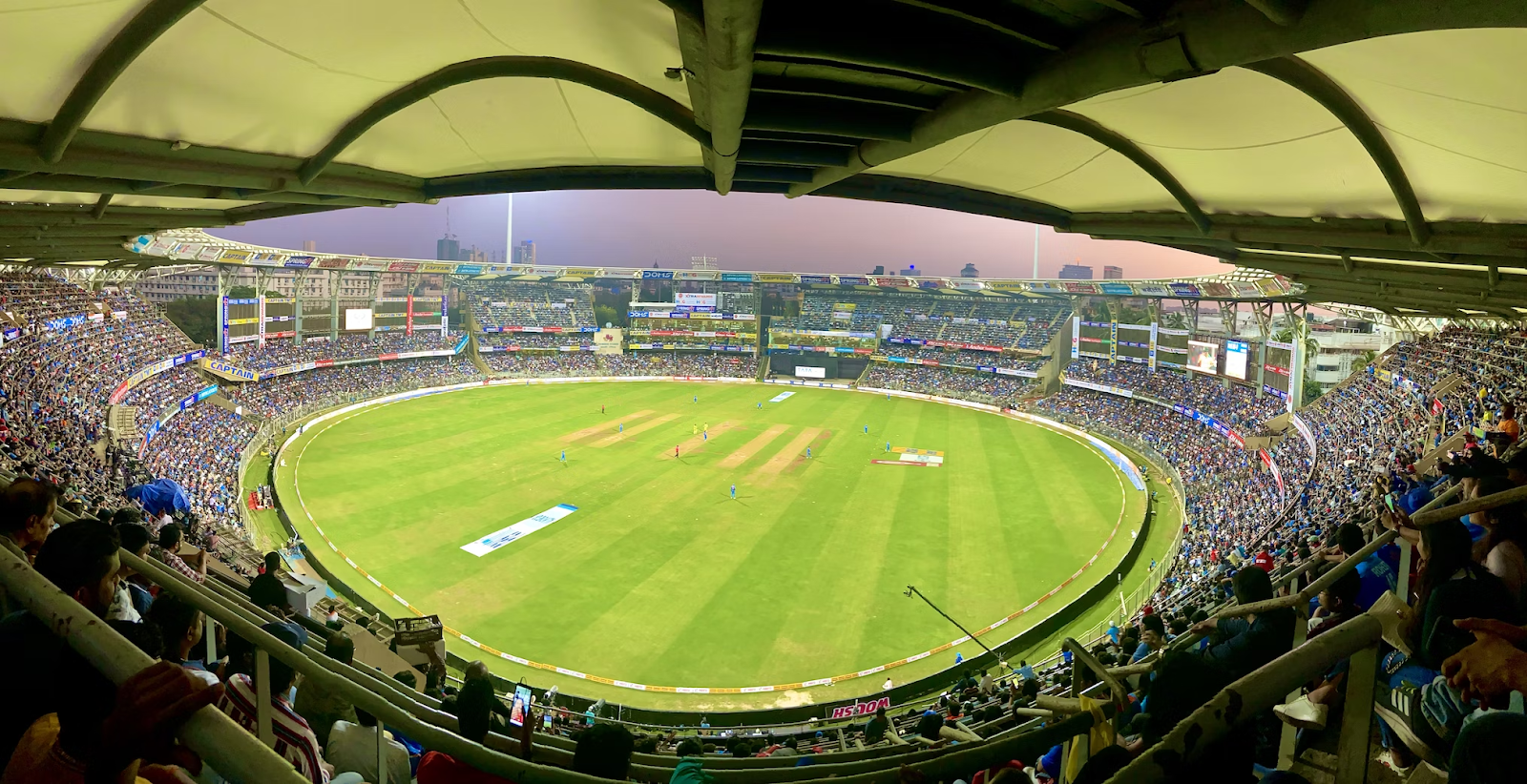
Photo By Ajay Parthasarathy on Unsplash
The rise of data analytics in fantasy cricket strategies is transforming how enthusiasts approach the game, particularly within the high-stakes environments of IPL and World Cup tournaments. These analytical tools harness the power of player performance statistics, historical matchup data, and myriad other relevant factors to provide users with insights that can be integral to assembling optimal fantasy teams.
Let's explore how data analytics is shaping the landscape of fantasy cricket:
Advanced Statistical Models
- These models delve deep into player statistics to forecast future performance, taking into account factors such as form, fitness, and historical success against specific opponents.
- By analysing this data, users can make more informed decisions about which players might contribute most effectively to their fantasy squads.
Predictive Analytics
- Utilizing historical data, these analytics can offer forecasts about team dynamics and potential match outcomes.
- This insight aids users in understanding the nuanced interplay of individual player contributions within the context of team performance, enhancing the team selection process.
Data-Driven Simulations
- By simulating various match scenarios based on extensive data, these tools provide a virtual testing ground for different team combinations.
- Users can explore the likely impact of player selections on their fantasy team's success, thereby refining their strategies before finalizing their lineups.
The implementation of these data analytics techniques allows for a deeper comprehension of the complexities of cricket. As users interpret the statistical probabilities and patterns presented by these sophisticated models, they can craft fantasy teams with a robust foundation in data. Integrating analytics into fantasy cricket is not merely about playing a game; it's about demystifying the intricacies of cricket strategy through the lens of data science, elevating the decision-making process from guesswork to informed prediction.
Strategy Optimization
The significance of data analytics in shaping fantasy cricket strategies has been gaining momentum, as enthusiasts look to outsmart their competitors in IPL and World Cup tournaments. The use of sophisticated analytics platforms enables users to delve into extensive player performance statistics and historical matchup data to craft superior teams.
These analytics platforms harness a multitude of data points including player statistics, recent form, fitness levels, and historical performances against specific opponents. This rich tapestry of information becomes the bedrock upon which users can make informed decisions about their team composition.
Advanced algorithms are employed to analyze this data, ensuring that users can assemble a balanced and potent team while adhering to the budget constraints and rules set by the fantasy league. Without focusing on individual players or specific betting strategies, the emphasis here is on the broader strategy of utilizing data effectively.
Moreover, data visualization tools are indispensable in this process, providing a user-friendly interface that translates complex data sets into digestible, visual formats. This allows users to interpret and understand player metrics at a glance, which is pivotal in making strategic decisions in the dynamic and competitive realms of IPL and World Cup fantasy cricket leagues.
Future Trends in Fantasy Sports
As we delve into the evolving world of fantasy cricket, it's evident that advanced data analytics is playing a pivotal role in shaping game strategies. Fantasy sports platforms are harnessing the power of player performance statistics, historical matchup data, and various other metrics to aid users in assembling their ideal teams, especially for high-stakes tournaments like the IPL and the Cricket World Cup.
The Rise of Data Analytics in Fantasy Cricket
- Comprehensive Data Utilization: Platforms are integrating vast arrays of player statistics to provide a holistic view of potential team performance. This includes not only batting and bowling averages but also nuanced metrics such as player form, pitch conditions, and head-to-head records.
- Strategic Team Assembly: By analysing historical data and current player conditions, these platforms offer users insights into creating balanced and effective teams. This data-driven approach helps in weighing the odds for various player combinations during IPL and World Cup contests.
Technological Advancements Enhancing Strategy
- Sophisticated Algorithms: With the aid of cutting-edge machine learning algorithms, fantasy platforms can offer predictions on player performances that help users in making informed choices for their fantasy teams.
- Dynamic Strategy Adaptation: As these systems incorporate feedback mechanisms, they become adept at learning from previous outcomes, thereby continuously refining the strategies suggested to fantasy managers.
Data Analytics Tools in Fantasy Cricket
- Accessible Analytics Platforms: Tools like PyCaret are democratizing the use of complex analytics, enabling even those without deep technical expertise to benefit from data-driven insights.
- In-Depth Statistical Analysis: A rise in analytics tools that focus on the statistical integrity of player and team evaluations is expected, which will influence the way teams are built and managed.
Visualization's Role in Strategy Formation
- Interactive Data Tools: Visualization libraries such as Plotly are making it easier to interpret intricate datasets through interactive charts and graphs, which can depict player trends and performance projections at a glance.
- Enlightened Decision Making: With visual data at their disposal, fantasy cricket managers can make swift and informed decisions that are crucial during the fast-paced selection processes of drafts and trades.
The integration of sophisticated data analytics into fantasy cricket is revolutionizing the way enthusiasts approach team selection. By providing a data-centric, analytical approach to evaluating player performances and team dynamics, these advancements are set to elevate the strategic aspect of fantasy cricket to new heights, particularly for prominent tournaments like the IPL and the World Cup.




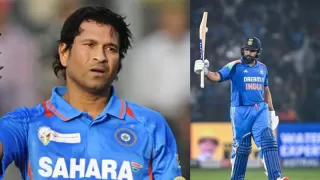
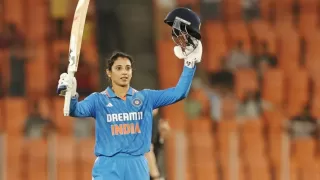

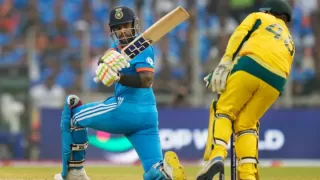

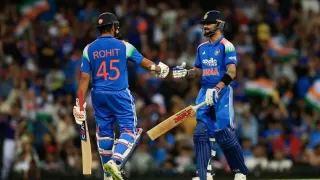



Give Your Feedback